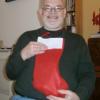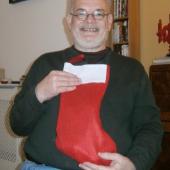The Algonquin Round Table
If you were asked to take one of those online quizzes about theater, how do you think you’d score? Could you identify Stephen Sondheim? Of course. Andrew Lloyd Webber, probably. How about August Wilson or Neil Simon? Easy? But who are Al Hirschfeld, David Belasco, Edwin Booth or John Golden? Not so sure about them? Well, those last four have Broadway theaters named after them.
When I was an undergrad, I didn’t understand how people planning careers in theater could know so little, not just about its history, but about the business side of theater. I read Variety weekly, was the first one to get the Best Plays Yearbooks at the library and I still subscribe to the Sunday New York Times. My plan for this series is to dig deeper and discuss the people from the past who set standards still in place today. I’m doing the work so you don’t have to. I hope you’ll stick with me.
Following World War 1, five art movements questioned and revised specifications for literature, theater, music, dance and visual arts. In Moscow, impresario Sergei Diaghilev created the Ballet Russes; in Paris, Gertrude Stein and her lost generation held salons at 27 Rue de Fleurus; in London, the Bloomsbury Group was at work, while in New York there were two separate movements: The Harlem Renaissance (more on that in future) and the Algonquin Round Table.
By 1920, American youth, as always, were making serious societal changes. A popular song of the period asked: “How you gonna keep ‘em away from Broadway, Jazzin’ around, paintin’ the town.” Journalists, authors and actors gathered to talk over lunch, but only one became world-famous.
Critics don’t wield as much power now that shows that feature production values like a crashing chandelier, pile of junk, a witch who defies gravity or a landing helicopter overcome weaknesses to guarantee a long run. However, a century ago, they were essential to the business of theater. There were 19 daily newspapers in Manhattan alone, and Broadway hosted 85 theaters (there are now 41).
Frank Case owned the Algonquin Hotel at 59 W. 44th Street since it opened in 1902 and he loved artists. The hotel served pastries, especially popovers, which its clients enjoyed, so Case lured Alexander Woollcott, the New York Times’ emperor among critics to try them. Respected, but controversial, when a bad review got Woollcott banned from theatres owned by the Shubert Brothers, he lambasted them in print. Their profits suffered, so Woollcott was allowed back to review Shubert productions. Times critics, Ben Brantley and Charles Isherwood haven’t rocked any boats, but their predecessor, Frank Rich was known as the “Butcher of Broadway,” after Sondheim’s Sweeney Todd. (Unlike critics Brooks Atkinson and Walter Kerr, Woollcott has no theater named for him)
Gradually, poet Dorothy Parker, humorist Robert Benchley, sportswriter Heywood Broun, playwright Marc Connolly, novelist Edna Ferber, critic and playwright George S. Kaufman and editor Harold Ross were drawn to the Algonquin. A table was placed in the center of the room to accommodate them and the “Vicious Circle” (as they were called) swapped tidbits across what’s now known as The Algonquin Round Table. (Think about high school or college cliques hanging out at a diner looking for their place in the world and you get the idea).
Among the lasting contributions of these people are Eight Pulitzer Prizes, volumes of humor, poetry, novels, plays and The New Yorker Magazine. While Case was happy to provide plates of celery and the popovers for the group, in those lean years, Vanity Fair paid so little that Parker and Benchley could only afford eggs. Besides lunch, on Saturday evenings when they weren’t working, the regulars were joined by writer Ring Lardner, actor Harpo Marx and others for the Thanatopsis Literary and Inside Straight Club. Games included poker, cribbage, charades and "I can give you a sentence."
During one session, Parker had to use the word horticulture in a sentence. Her reply? "You can lead a horticulture but you can't make her think.”
No Sirree!
In 1922, La Chauve-Souris was a smash hit. The Round Table decided it was time they created something and responded with No Siree! a one night only event. Established stars sang in the chorus as violinist Jascha Heifetz played off-key in the wings. Benchley, Connelly and Kaufman joined Woollcott to satirize playwrights such as Zoe Akins, Eugene O’Neill and A.A. Milne. Benchley’s Treasurer’s Report led to a career in film shorts (see below).
Many of these people require profiles of their own, (especially Woollcott), but several of these profiles appear below:
Franklin Pierce Adams (1881-1960) was famous before the Round Table. When he created a column in the manner of Samuel Pepys's Diary, it was popular reading in the Chicago Evening Mail. When he moved to the New York Tribune it was renamed The Conning Tower. He continued the column at various newspapers until 1941. He regularly reported the social activities of his friends.
In the summer of 1975, people were afraid to go swimming, even inland, because of the publicity that came from Jaws, the movie based on Peter Benchley’s novel. His grandfather, Robert Benchley (1889-1945) would have been proud. Benchley had several careers in his lifetime. He wrote for Vanity Fair and The New Yorker, and appeared both on stage and film. (Here’s a link to his Treasurer’s Report). At Vanity Fair, he met playwright Robert E. Sherwood and poet Dorothy Parker, who would become his lifelong best friend. When Parker was fired, Sherwood and Benchley resigned in solidarity.
Marcus Connelly (1890–1980) was a playwright whose The Green Pastures won the 1930 Pulitzer Prize for Drama and with that achievement he maintained his celebrity for half a century. Connolly was no slacker, though. With George S. Kaufman, he wrote Dulcy, To the Ladies, Merton of the Movies and Beggar on Horseback; the screenplays for I Married a Witch, Captains’ Courageous and Reunion in Paris and acted in movies and on TV.
Edna Ferber (1885–1968) is quoted as saying that “being an old maid is like death by drowning, a not wholly unpleasant sensation once you cease to struggle.” This old maid was the most productive member and her work has had quite an impact on the world stage. Her novels include the Pulitzer Prize-winning So Big, Cimarron (the 1931 film version was the first Western to win the Oscar for Best Picture), Saratoga Trunk, Come and Get It and Giant (filmed with Elizabeth Taylor, Rock Hudson and James Dean). She collaborated with George S. Kaufman on such plays as The Royal Family (currently playing at the Guthrie), Stage Door and Dinner at Eight (currently being presented by the Minnesota Opera). Ferber’s novel, Show Boat was the first landmark musical of the 20th Century. 90 years later, it still has an impact, proven recently in a concert production starring Vanessa Williams (Ugly Betty), Norm Lewis (Porgy and Bess) and Fred Willard. This glorious production can be streamed at PBS.org.
While there were many one-of-a-kind artists among the Vicious Circle, this is especially true of the remarkable Dorothy Parker (1893–1967). Her razor sharp wit is unmatched in her poetry (Anne Hathaway reads Parker here), reviews, plays and movie scripts. Parker’s work appeared in Life, The New Yorker, Vogue, McCall’s and The New Republic. Enough Rope, her first volume of poetry was published in 1926 and her story, Big Blonde won the O. Henry Award in 1929. She was a fragile creature in a compact body. An affair with playwright Charles MacArthur resulted in an abortion, depression and other maladies. With her second husband, Alan Campbell she wrote the 1937 version of A Star is Born. A political activist, she was arrested when she “sauntered” while protesting the executions of Sacco and Vanzetti. In Alan Rudolph’s film, Mrs. Parker and the Vicious Circle, she’s played by Jennifer Jason Leigh.
Harold Ross (1892–1951) has created one of the most lasting contributions from the Round Table. He co-founded The New Yorker magazine, one of the few magazines still published weekly. Having edited Stars and Stripes during WWI, The New Yorker offered metropolitan sophistication, and included such writers as Janet Flanner, E.B. White, James Thurber, Woollcott, Benchley, Parker and later Vladimir Nabokov and J.D. Salinger.
The Ten-Year Lunch
As the members of the Round Table became more successful, they moved on. By 1932, the Vicious Circle had ceased to be. That is, until a documentary, The Ten-Year Lunch won an Oscar. The table, which had been in storage, was repaired, and is again on display in the Oak Room with Al Hirschfeld’s commemorative caricatures behind it. I had the pleasure of dining in the Oak Room at a round table. The food is expensive, but worth every cent. If the Oak Room is closed, diners can eat in the Algonquin’s lobby. It’s an unforgettable experience.
By the way, as stated above, Al Hirschfeld was a caricaturist. His theater was formerly the Martin Beck on E. 45th Street. David Belasco was a playwright (Madam Butterfly, Girl of the Golden West) and producer, known for using the first casting couch. His theater is west of Broadway on 44th Street. Edwin Booth was an actor, brother of Abe Lincoln’s assassin, John Wilkes Booth and John Golden was an actor, playwright and producer. The Booth and Golden frame the buildings on the south side E. 45th Street, between Shubert Alley and 8th Avenue.
I hope you’ll stay with me and there won’t be a quiz afterwards – unless you want one!




